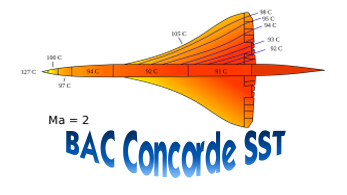Fairey Aviation
Fairey Swordfish 1
| Role | Torpedo bomber |
|---|---|
| National origin | United Kingdom |
| Manufacturer | Fairey |
| Built by | Fairey, Blackburn Aircraft |
| First flight | 17 April 1934 |
| Introduction | 1936 |
| Retired | 21 May 1945 |
| Primary users |
Fleet Air Arm, Royal Navy
|
| Produced | 1936–1944 |
| Number built | 2,391 (692 by Fairey and 1,699 by Blackburn) |
.
History Fairey Aviation Company Limited
Fairey Swordfish 1

The Fairey Swordfish is a biplane torpedo bomber, designed by the Fairey Aviation Company. Originating in the early 1930s, the Swordfish, nicknamed "Stringbag", was principally operated by the Fleet Air Arm of the Royal Navy. It was also used by the Royal Air Force (RAF), as well as several overseas operators, including the Royal Canadian Air Force (RCAF) and the Royal Netherlands Navy. It was initially operated primarily as a fleet attack aircraft. During its later years, the Swordfish was increasingly used as an anti-submarine and training platform. The type was in frontline service throughout the Second World War.
Despite being representative of early 1930s aircraft design and teetering on the edge of becoming outdated (in comparison to some alternatives), the Swordfish achieved some spectacular successes during the war. Notable events included sinking one battleship and damaging two others of the Regia Marina (the Italian navy) during the Battle of Taranto, and the famous attack on the German battleship Bismarck, which contributed to her eventual demise. Swordfish sank a greater tonnage of Axis shipping than any other Allied aircraft during the war. The Swordfish remained in front-line service until V-E Day, having outlived some of the aircraft intended to replace it.t.

-
Operational history
Production and further development

A Swordfish I during a training flight from RNAS Crail, circa 1939–1945 In early 1936, an initial production contract for 68 Swordfish aircraft was received, as the Swordfish I. Manufactured at Fairey's factory in Hayes, West London, the first production aircraft was completed in early 1936 and the type entered service with the Fleet Air Arm (FAA) in July 1936. By early 1940, Fairey was busy with the Swordfish and other types such as the new Fairey Albacore torpedo bomber. The Admiralty approached Blackburn Aircraft with a proposal that manufacturing activity for the Swordfish be transferred to the company, who immediately set about establishing a brand new fabrication and assembly facility in Sherburn-in-Elmet, North Yorkshire. Less than a year later, the first Blackburn-built Swordfish conducted its first flight. During 1941, the Sherburn factory assumed primary responsibility for the fuselage, along with final assembly and testing of finished aircraft
Photo Gallery
Fairey Aviation Company Limited
Fairey Swordfish 1


Fairey Aviation Company Limited
Fairey Swordfish I
General Info 1
-
-
- Crew: 4 (two pilots, radio operator and navigator)
-
Capacity: [94 troops or
- 70 paratroopers
- Length: 99 ft 5 in (30.30 m)
- Wingspan: 162 ft 0 in (49.38 m)
- Height: 38 ft 9 in (11.81 m)
- Wing area: 2,916 sq ft (270.9 m2)
-
General Info 2
-
-
- Empty weight: 79,230 lb (35,938 kg)
- Max takeoff weight: (61,235 kg)
- Fuel capacity: 6,880 imp gal (8,260 US gal; 31,300 L)
- Powerplant: 4 × Bristol Centaurus 173 18-cylinder air-cooled Sleeve valve, radial engines, 2,850 hp (2,130 kW) each
-
General Info 3
- Maximum speed: 238 mph (383 km/h,
- Cruise speed: 173 mph (recommended cruise)
- Range: 1,300 mi (2,100 km, 1,100 nmi) at 8,000 feet (2,400 m) with 29,000 lb (13,000 kg) payload; 160 mi (140 nmi; 260 km) with (23,000 kg) payload
- Ferry range: 3,960 mi (6,370 km, at (3,600 kg) (with (450 kg) payload)
- Service ceiling: 16,000 ft (4,900 m)
.
Links to Youtube & Others
On 17 April 1934, the prototype T.S.R II, K4190, performed its maiden flight, flown by Staniland. In comparison with the previous prototype, K4190 was equipped with a more powerful model of the Pegasus engine, an additional bay within the rear fuselage to counteract spin tendencies
Fairey Aviation
Fairey Swordfish
The Fairey Swordfish is a biplane torpedo bomber designed by the Fairey Aviation Company. Originating in the early 1930s, the Swordfish, nicknamed "Stringbag"
Youtube Link
The Fairey Swordfish is a biplane torpedo bomber designed by the Fairey Aviation Company. Originating in the early 1930s, the Swordfish, nicknamed "Stringbag"













